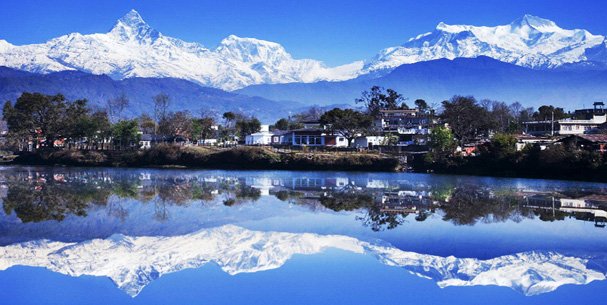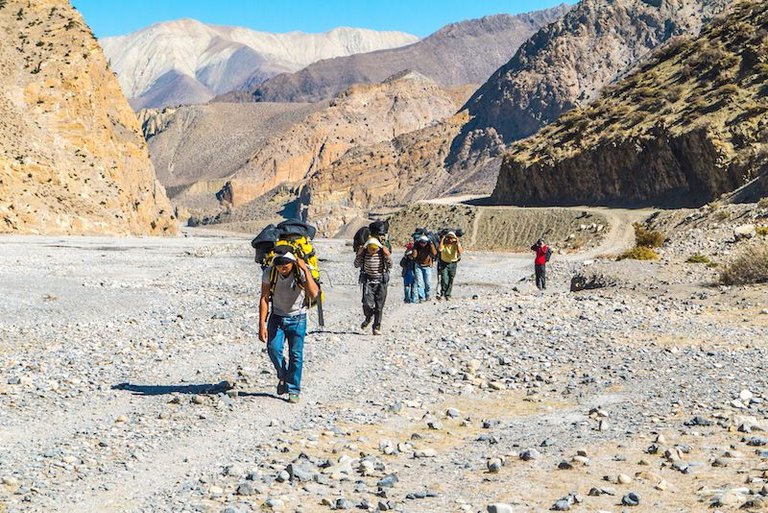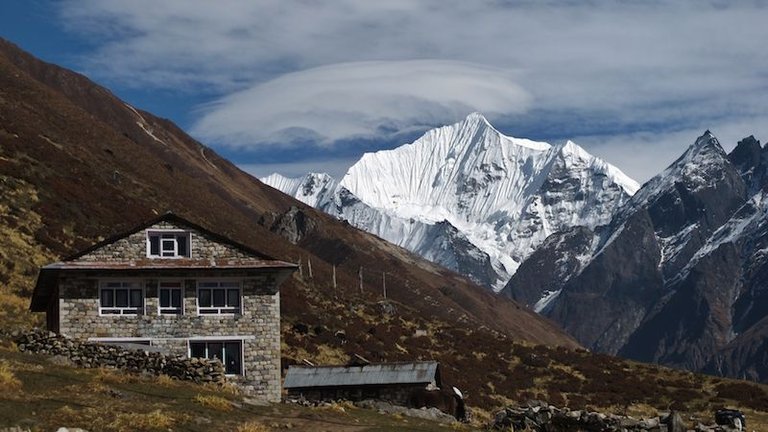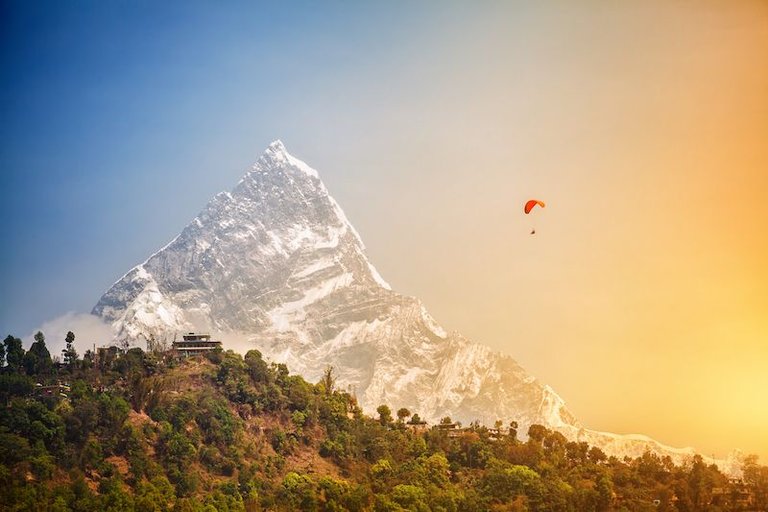The Annapurna region is situated in Western Nepal. Broadly speaking, the region refers to the areas around the Annapurna range, the Dhaulagiri Range and the Kaligandaki River Valley. It’s long been a popular region among travellers: it’s home to a variety of landscapes, a variety of cultures and variety of trekking trails. The mountain views are among the best in Nepal, while logistics are generally simple. Here are some reasons why Trekking in the Annapurna region should be on your bucket list.
Easy logistics in Annapruna Region
One reason why the Annapurna region is so popular is the ease of planning--and executing--a trek here. Pokhara is the gateway to much of theregion, and has many hotels and hostels--that can help make arrangements easy. It’s also a good town in which to pick up equipment and supplies, such as waterproof layers or trekking poles. Further, transportation links from Pokhara are excellent. Pokhara Airport has connecting flights with Jomsom, the major gateway to the Mustang region. Road developments in recent years have connected even more smaller settlements. Plus, good quality lodging and food is the norm throughout the Annapurna region. While any Himalayan trek requires some planning, this is relatively straightforward when trekking in the Annapurnas.
Short treks Options in Annapruna Region
Short treks (of five days or fewer) are particularly feasible in the Annapurna region, because access from Pokhara is quick. You can get deep into the mountains in just a couple of days. One of the most popular short treks is the Ghorepani-Poon Hill trek, the highlight of which is the climb to Poon Hill early in the morning for sunrise views of Machchapucchare (Fishtail), Annapurna and other close-by peaks. This trek can be done in as little as four days. But this is only one of many short treks possible in the region, and many others--such as the Annapurna Community Lodge Trek or the Kopra Danda RidgeTrek--are much less crowded.

If you have very little time, then one day treks from Pokhara are possible and very worthwhile. The Sarangkot hike can be done in a day or less, and offers spectacular views across the mountains, as well as over Pokhara city and Phewa Lake.
Longer treks Options in Annapurna Region
The Annapurna region is perhaps best known for the Annapurna Circuit (also known as the Annapurna Sanctuary trek), a classic trek that is an 8-12 day round trip from Pokhara. However, as with the shorter, popular Poon Hill trek, the Annapurna Circuit is far from the only long-trek option in the Annapurna region. Road developments in the last few years have taken some of the spotlight off the Annapurna Circuit and made other routes more accessible and more appealing.
For a challenging alternative east of Pokhara, the Manaslu Circuit passes through undeveloped and unspoilt countryside. For extremely diverse landscapes and vegetation, the Kali Gandaki Gorge-Jomsom-Muktinath trek takes you through the deepest gorge in the world through to the ‘other side’ of the Himalayas, lower Mustang, with dry and barren topography.
Visiting the beautiful city of Pokhara
With few exceptions, all treks in the Annapurna region start or end in Pokhara (although it’s unlikely you’ll be walking straight out of Pokhara--most trailheads are a drive from the city). This is good news, because the lakeside city is charming in its own right. It’s much more compact than Kathmandu, and has a more chilled-out vibe, while still being a large enough city to find all sorts of comforts.

Favourite activities in Pokhara include paddling on pretty Phewa Lake, taking a yoga class, relaxing at a day spa, taking short hikes up to lookout points (such as the Shanti Stupa), or even trying various adventuresports, such as paragliding, zip-lining and bungy jumping . There arealso a surprisingly large number of sightseeing and cultural activities in Pokhara, especially as the city is not well-known for these things. You canvisit Devi’s Falls, the Bindyabasini Temple, the Gupteshor Mahadev Cave and the International Mountain Museum.
Safety concern in Annapurna region
If you’re looking to get off-the-beaten-path in Nepal, you may want to look beyond the Annapurna region. However, there are some very goodreasons for visiting a well-frequented area. One of these is safety.
Many trails in the Annapurnas are well-developed, with lots of trekkers passing through. Although it’s never advisable to trek entirely alone, trekking in small groups in the Annapurnas is generally safe. Lodges/teahouses are abundant throughout the region, meaning that help will usually be close to hand, should you need it. Plus, communications in the Annapurna region are good. If you need to arrange for a rescue helicopter or get in touch with your insurance company or family back home, this is much more doable in the Annapurnas than some other parts of the Himalayas.
Diverse cultures in Annapurna Region
The Annapurna region is certainly not a mountain wilderness in the most part, as many local communities are dotted throughout the hills and mountains. This means it’s easy to interact with and learn about the local ethnic groups, particularly Gurung, Magar and Tamang people. Deep in the hills, people still tend to wear their local dress, such as checkered cloth and intricate gold jewellery, which can be interesting to observe. If trekking along lesser-trodden paths, you may be invited to sit with people and share food with them. A great way of meeting locals and seeing how they live is to stay at homestays. Certain trails (such as the Annapurna Community Lodge Trek) haveestablished networks of homestays, where you get up-close and personal withlocal people in their homes.

Diverse landscapes in Annapurna Region
Perhaps more than any other region in Nepal, in the Annapurna region you can see an enormous variety of landscapes. This will be particularly evident on longer treks, as the environment changes along the way. Pokhara is relatively low (827 metres), meaning the climate there is usually warm, and the vegetation lush, with bamboo forests. As you climb higher into the Annapurnas, the climate cools. In the spring you will be treated to red, pink, white and purple blooms in the rhododendron forests. Passing through the deepest gorge in the world, the Kali Gandaki Gorge, you will be amazed by the steep cliffs on either side of you. If trekking to and around Jomsom, in Lower Mustang, youwill experience a more arid, Tibetan-type landscape, as this area sits in the rain shadow of the Himalayas.

While the image that comes to many people’s minds at the name ‘Nepal’ is snow-capped peaks, in the Annapurna region you will see that there is so much more.
For more information go to:-
https://www.upeverest.com/why-trekking-in-the-annapurna-region-should-be-on-your-bucket-list
Hi! I am a robot. I just upvoted you! I found similar content that readers might be interested in:
https://www.upeverest.com/why-trekking-in-the-annapurna-region-should-be-on-your-bucket-list
Curious?
introduction post
Check out the great posts I already resteemed.Resteemed by @resteembot! Good Luck! The @resteembot's Get more from @resteembot with the #resteembotsentme initiative
Great information, thank you! We're planning for a trek through Annapurna later this year and your post really made me excited about it and to want to go right now.
Do you know anything about the prices of these treks? Have you done any yourself?
Wow! What awesome views! The Annapurna region looks so pristine
All the Nepalese and Nepal would always be ready to welcome you in our country .
नेपाल तथा नेपालीहरु यहाहारुको स्वागतमा सदैब तत्पर रहनेछ ।
Great info on this. I just booked my trip to Nepal for 30 days. I plan on doing the entire circuit, but haven't worked out the details yet. I have several months to do that.